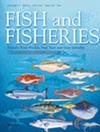解决小规模渔业中的冲突
IF 6.1
1区 农林科学
Q1 FISHERIES
引用次数: 0
摘要
由于小规模渔业(SSF)系统内部发生的高度复杂的相互作用,冲突可能普遍存在于世界各地。为了更深入地了解这些冲突和解决策略,进行了文献综述。尽管遇到了独特而复杂的冲突,但在其驱动因素、涉及的利益相关者、强度、反应和解决策略方面,研究中出现了某些共同模式。总共分析了记录全球201个地点冲突的194份出版物。据报道,SSF内部以及SSF与其他13个团体和活动之间都发生了冲突,主要是与大型渔业(LSF)和公共当局。对资源和空间的竞争以及对捕鱼的限制是冲突最常见的驱动因素。这些事件有时与种族、政治腐败和怨恨等有关。暴力反应相当频繁,但在紧张局势中也出现了一些合作战略。利益相关者参与和新法规是缓解冲突最常见的策略,尽管这些方法的有效性因地区而异。虽然在某些情况下使用了冲突解决策略的组合,但同时使用的策略不超过两种或三种,而且在降级的情况下使用的策略不到一半。这凸显出缺乏多方面的冲突解决战略。本文章由计算机程序翻译,如有差异,请以英文原文为准。
Untangling Conflicts in Small‐Scale Fisheries
Conflicts are presumably pervading small‐scale fishery (SSF) systems around the world due to the highly complex interactions taking place within them. To provide a deeper understanding of these conflicts and the resolution strategies in place, a literature review was conducted. Despite the unique and complex conflicts encountered, certain common patterns emerged across the studies in their drivers, stakeholders involved, intensity, responses and resolution strategies. In total, 194 publications documenting conflicts across 201 locations worldwide were analysed. Conflicts were reported both within SSF and between SSF and 13 other groups and activities, primarily with large‐scale fisheries (LSF) and public authorities. Competition over resources and space, along with restrictions to fishing, were the most common drivers of conflict. These were occasionally associated with ethnics, political corruption and resentment among others. Violent responses were rather frequent, yet some cooperation strategies also emerged in the midst of tensions. Stakeholder engagement and new regulations were the most frequent strategies to de‐escalate conflicts, although the efficacy of these approaches varied across locations. Although combinations of conflict resolution strategies were used in some instances, strategies were combined in no more than two or three at a time and in less than half of the de‐escalated cases. This highlights a lack of multifaceted conflict resolution strategies.
求助全文
通过发布文献求助,成功后即可免费获取论文全文。
去求助
来源期刊

Fish and Fisheries
农林科学-渔业
CiteScore
12.80
自引率
6.00%
发文量
83
期刊介绍:
Fish and Fisheries adopts a broad, interdisciplinary approach to the subject of fish biology and fisheries. It draws contributions in the form of major synoptic papers and syntheses or meta-analyses that lay out new approaches, re-examine existing findings, methods or theory, and discuss papers and commentaries from diverse areas. Focal areas include fish palaeontology, molecular biology and ecology, genetics, biochemistry, physiology, ecology, behaviour, evolutionary studies, conservation, assessment, population dynamics, mathematical modelling, ecosystem analysis and the social, economic and policy aspects of fisheries where they are grounded in a scientific approach. A paper in Fish and Fisheries must draw upon all key elements of the existing literature on a topic, normally have a broad geographic and/or taxonomic scope, and provide general points which make it compelling to a wide range of readers whatever their geographical location. So, in short, we aim to publish articles that make syntheses of old or synoptic, long-term or spatially widespread data, introduce or consolidate fresh concepts or theory, or, in the Ghoti section, briefly justify preliminary, new synoptic ideas. Please note that authors of submissions not meeting this mandate will be directed to the appropriate primary literature.
 求助内容:
求助内容: 应助结果提醒方式:
应助结果提醒方式:


